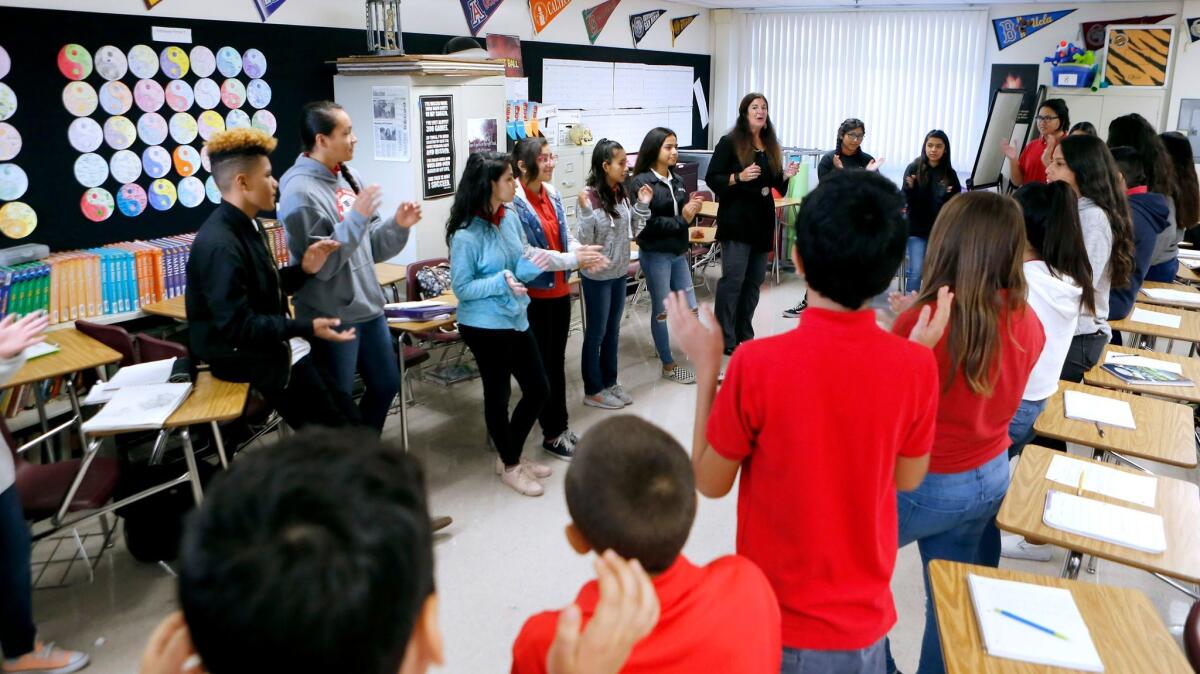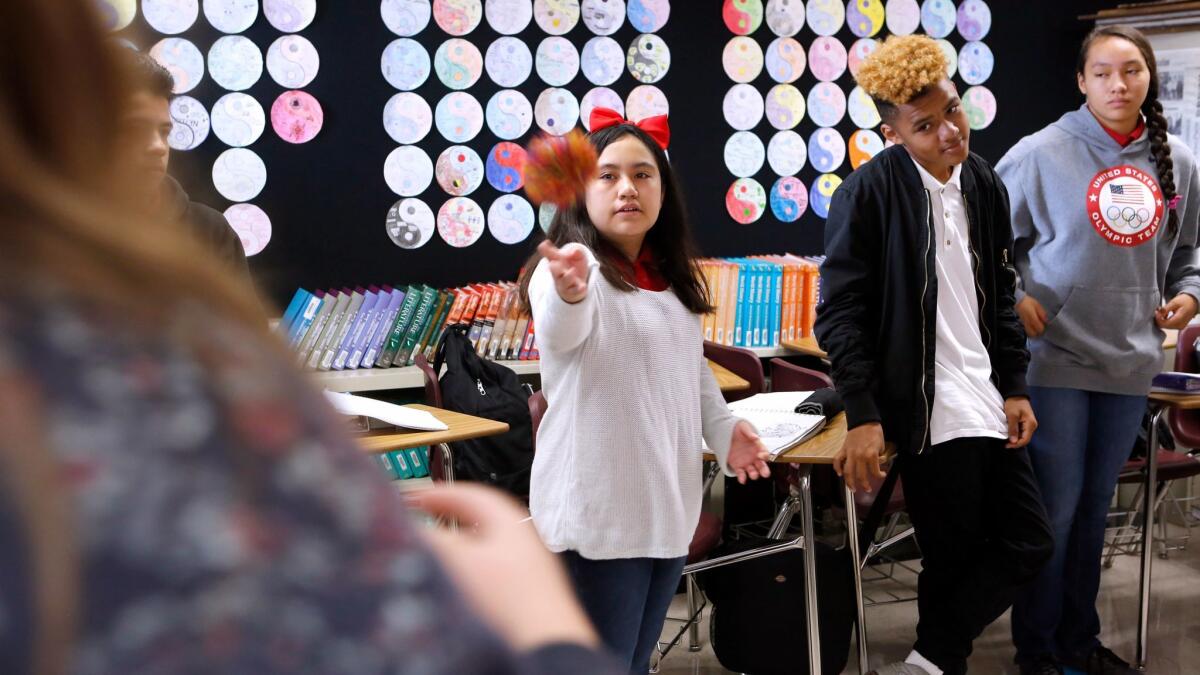Roosevelt Middle School teachers use alternative methods to help students manage, express their emotions and behaviors

- Share via
Students in Pam Zamanis’ class at Roosevelt Middle School know Wednesday mornings are dedicated to community-building circles, where sharing is a key part of the activity.
Zamanis listed questions on a whiteboard and her seventh- and eighth-grade students were given a few minutes to write down their answers. Then they all pushed their desks to the sides of the room and stood in a circle, waiting for their teacher to begin the exercise.
“If I could change anything in the world, it’d be to get rid of racism because I believe racism is the cause of many of our problems in the world,” Zamaris said as she tossed a Koosh ball to a student in her Pathways to College class. The ball was then tossed from student to student as they gave their answers.
For half an hour, students shared their answers to questions. Some students opted out, while others seemed eager to share.
Roosevelt Middle School is the first campus in the Glendale Unified School District to pilot restorative-justice practices, which are alternative methods, such as community-building circles, meant to help students manage and express their emotions and behaviors with others.
By taking a proactive approach, it can help prevent reaching disciplinary actions such as issuing suspensions and time-outs, according to school officials.

“When more kids feel like they belong, and school is a safe place, it’s easier for them to learn,” said Mary Mason, director of curriculum development and implementation for the district.
“Kids start to develop an understanding and empathy of each others’ stories. They realize they might look different than me, they might believe different than me … but we’re not all that different,” she said.
Under Mason’s leadership as principal a year ago, Roosevelt was the first school to offer training for 14 teachers interested in implementing community-building circles in their curriculum.
Now, with principal Kyle Bruich at the helm, teachers are continuing to implement these exercises and receive more training.
Other schools in the district have also shown interest in implementing restorative-justice practices.
English teachers Lynette Ohanian and Anita Arjoyan said using community-building exercises to help address the speaking and listening state standards and reaffirm respecting each student’s time to speak.
For Zamanis’ class, community-building circles have become a popular activity among her students. The one time she canceled the exercise — due to conflicting time schedules with a school assembly — students immediately asked, “What happened?”
“Kids love circles — it gets them up and moving, and they learn a lot about each other by sharing things,” she said.
Twitter: @vegapriscella
ALSO
Schiff urges textbook publishers in California to include more information on Armenian Genocide
Glendale Unified extends negotiation period for potential property exchange
At 90, Glendale Community College celebrates longevity and prosperity
